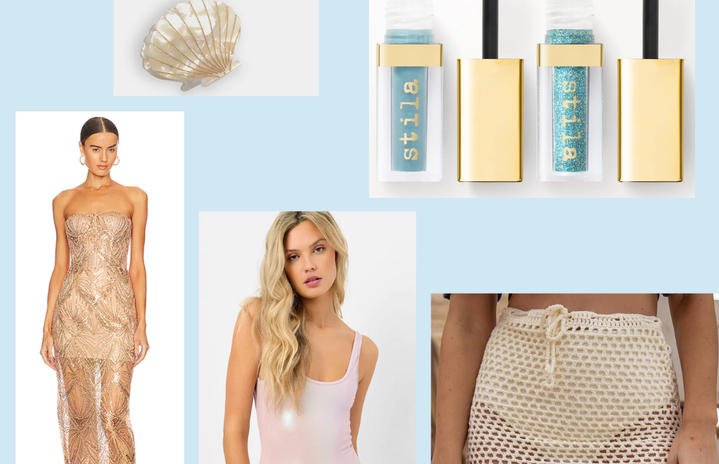It all started with an abundance of no necklaces at the Golden Globes. Here’s just a few examples:
This no-necklace pattern was slightly more abundant than usual, leading a community of people on TikTok to hypothesize about the new “no-necklace” trend.
There was a range of ways these videos were received. Soon, some GRWMs included outfits and low-cut tops forgoing necklaces. Others stitched the original video and blasted the public for being too easily influenced. A debate surrounding the impacts of influencing emerged.
DIscourse condemning those who get easily persuaded by celebrities, influential individuals, TikTok videos, and popular trends emerged. This expanded into further conversation surrounding fast-fashion, luxury brands, and impressionable consumers.
As the publication Business of Fashion has discovered:
“Searches for linen pants increased 66 percent in May on Poshmark, thanks to ‘coastal grandma,’ while searches for pleather bodysuits spiked 83 percent on Google during late March, just as videos featuring ‘fetishcore,’ flooded TikTok.”
Lieber, Chavie. “How to Keep Up With TikTok’s Lightning-Fast Trend Cycle.” The Business of Fashion, 24 June, 2022,
www.businessoffashion.com/articles/marketing-pr/how-to-keep-up-with-tiktoks-lightning-fast-trend-cycle/.
Users across TikTok began to share their experiences of being influenced to buy expensive products that were not effective or worth the money. “Jaquelyn” on Tiktok shares the products that were not worth her money: https://www.tiktok.com/t/ZTRt8JkyQ/.
Soon, ironically, “de-influencing” became the new trend: recommending the Redkin hair oil instead of the popular Olaplex, the $14 Elf Halo Glow foundation instead of the $46 Charlotte Tilbury Flawless Filter. However, although it started with the sincere idea of helping consumers spend responsibly and minimally, individuals include cheaper alternatives to the products they had bad experiences using.
They pass off these products as “tried and true”, ones they genuinely stand by and use. However, this circles back to the problem faced at the beginning, where influencers promote various products as “the best they’ve used”, assigning credibility where it may not be due. The same influencer would now promote a cheaper alternative, encouraging the purchase of a new product.
Be aware, a “de-influence” is an influence in itself.

